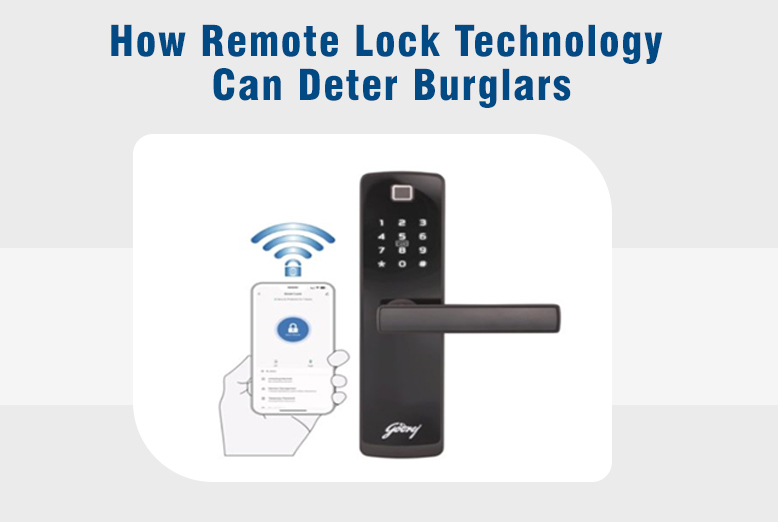Ensuring the security of our homes has become increasingly important since the crime rate is at its all-time high and is continuing to rise. One way to achieve that is by investing in remote lock technology, also known as smart locks. This technology allows homeowners to control their locks from a distance using smartphones or computers, thus offering convenience and peace of mind. In this article, we will explore the various different ways remote locks enhance home security and provide practical tips for maximising their effectiveness.
Understanding Remote Lock Technology
Remote lock technology enables homeowners to lock and unlock their doors remotely via the internet. Unlike traditional locks, which rely on physical keys, remote locks utilise wireless connectivity, such as Wi-Fi or Bluetooth, to provide seamless access control. With a remote lock, you can easily manage your lock settings from anywhere by installing a compatible smart lock and downloading the corresponding mobile app or accessing a web interface. All you need is a good internet connection. Some benefits of the remote lock technology include:
1. Streamlined Access Control
One of the primary benefits of remote lock technology is its ability to streamline access control. With traditional locks, homeowners must distribute physical keys to family members, friends, or service providers, increasing the risk of lost or stolen keys. Remote locks eliminate this risk by allowing you to grant temporary access privileges to individuals of your choosing. Whether it’s a house guest staying for the weekend or a repair technician needing access during specific hours, you can easily configure access permissions through the mobile app or web interface. That not only enhances security but also offers unparalleled convenience.
2. Comprehensive Activity Monitoring
Another advantage of remote lock technology is its ability to provide comprehensive activity monitoring. You can view detailed logs of door lock events through the mobile app or web interface. That includes timestamps and user identities. This real-time insight enables you to track who is entering and exiting your property, allowing you to detect any and all suspicious activity promptly. Whether it’s monitoring the arrival of family members or verifying the entry of service providers, remote lock technology offers peace of mind by providing a transparent record of home activity.
3. Integration with Security Systems
Remote locks can be seamlessly integrated into existing home security ecosystems, enhancing overall protection. They create a cohesive security network that can detect and respond to potential threats by connecting with other devices, such as surveillance cameras and alarm systems. For example, if a security camera detects motion outside the home, the remote door lock latch can automatically activate, preventing unauthorised entry. Similarly, remote locks can trigger immediate alerts and initiate predetermined responses, such as sounding alarms or notifying authorities, in the event of a security breach. This integration maximises the effectiveness of home security measures and enhances overall safety.
4. Visual Deterrence
In addition to their functional capabilities, remote locks serve as a visible deterrent to potential intruders. The presence of smart locks notifies would-be burglars that the property is equipped with advanced security measures and actively monitored. This visual deterrent can dissuade opportunistic criminals from attempting a break-in, reducing the likelihood of property damage or theft. Furthermore, homeowners can enhance the effectiveness of this deterrent by displaying signage indicating the use of Smart security systems, reinforcing the message that the property is protected.
Effectiveness and Considerations
While remote lock technology offers numerous benefits for home security, it is essential to consider certain factors to maximise its effectiveness:
1. Emphasising Password Security
To prevent unauthorized access, you should prioritize password security when setting up remote locks. Strong, unique passwords and additional security measures such as two-factor authentication are essential for safeguarding against potential breaches. By regularly updating passwords and avoiding common security pitfalls, you can enhance the security of your remote lock systems.
2. Addressing Connectivity Challenges
Reliable internet connectivity is crucial for the seamless operation of remote lock systems. Homeowners should ensure that their internet connection is stable and invest in backup options, such as cellular connectivity or manual keypad entry, to mitigate the risk of access disruptions during internet outages.
3. Educating Users
Proper user education is essential for maximising the effectiveness of remote lock technology. Homeowners should familiarise themselves with the features and functionalities of their smart locks and adhere to security best practices to mitigate potential risks. Additionally, users should stay informed about emerging security threats and take proactive measures to protect their home systems.
Remote lock technology offers homeowners a convenient and effective solution for enhancing home security. By providing streamlined access control, comprehensive activity monitoring, and integration with other security systems, remote locks offer a holistic approach to home protection. However, in order to maximise their effectiveness, users must prioritise password security, address connectivity challenges, educate themselves about system features, and augment security measures. By considering these factors and implementing best practices, you can leverage the full potential of remote lock technology to safeguard your home and loved ones effectively.
Also Read: Leading the Charge in Quantum Technology: Companies at the Forefront of Quantum Computing Innovation











